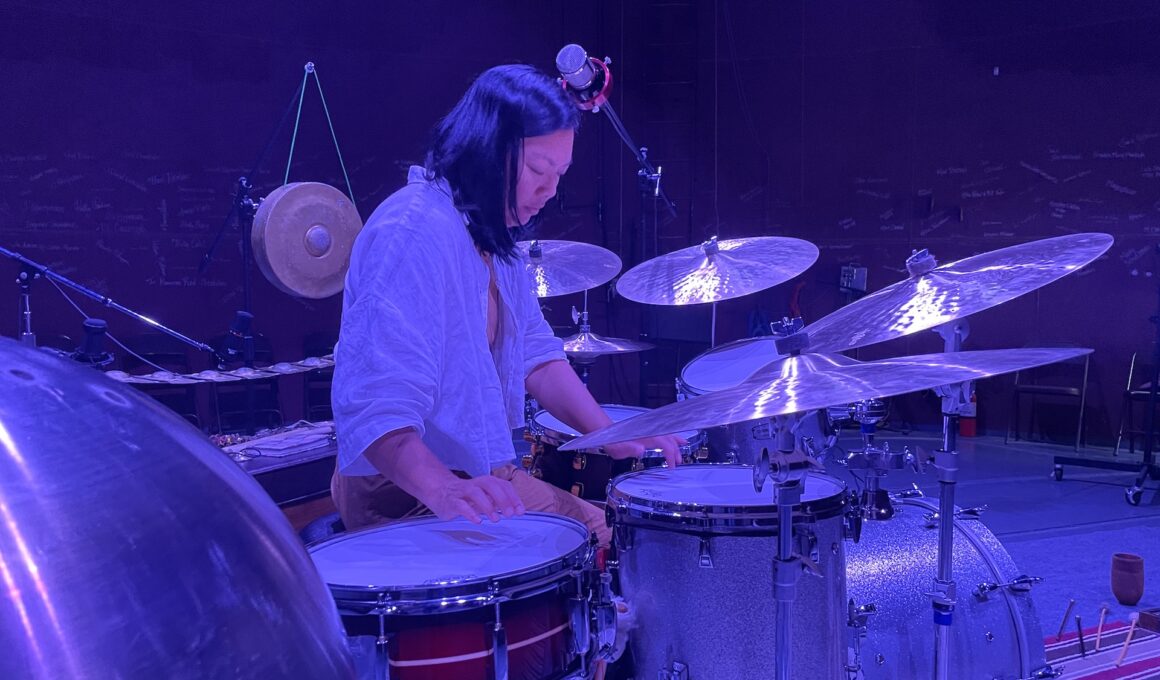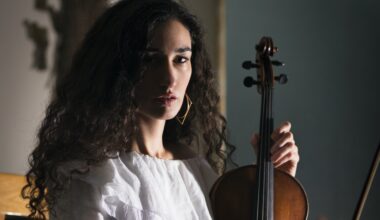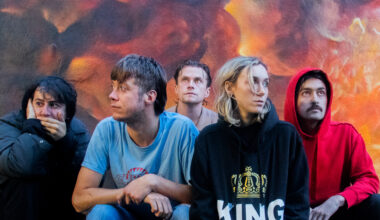Susie Ibarra is a Filipinx composer, percussionist, and sound artist.
Several of her music projects include Talking Gong (New Focus Recordings); Walking on Water (Innova Records); Water Rhythms sound installation that maps glacier sounds; Fragility Etudes and Four Meditations on Impermanence which are two works for solo and conducted large ensemble, and a developing landscape opera, an ancestral meditation, CHAN, in Ute Land of Colorado and Utah, produced and with the TANK Center for Sonic Arts.
Susie’s music practice focuses on conservation: with Indigenous and traditional music cultures including North and South Philippine islands; mapping water rhythms of glaciers and freshwaters with climate scientist Michele Koppes; collaborative initiatives in sustainable music and support for women and girls in South Sahara Morocco with climate activist Halim Sbai.
She is the founder of Sound Health Habitat, a cultural studio and journal that supports listening health practices, soundwalks, acoustic ecology and teaching a global community about rhythm in nature. Susie is a Foundation For Contemporary Arts Music/ Sound Artist (2022), National Geographic Explorers Storyteller (2020); USAArtists Music Fellow (2019); Asian Cultural Council Fellow (2018); TEDSenior Fellow (2014). Susie Ibarra is a Yamaha, Vic Firth, Zildjian Drum Artist.
Ibarra is part of this years Time to Listen Festival: The Ecological Crisis in Sound & Music at Akademie der Künste / 18.8—3.9.2023
FACTS
1. When I was a child I was asked what did I want to be when I grew up? I wanted to be a bright blue fish.
2. I did not realize how much it would affect me to read about Thich Nhat Hanh’s insight on deep ecology in which he speaks about how true love heals.
3. Motherhood is an opportunity to live a Divine gift that I find I am continually growing into and learning from my son and my mother and my mother figures , as we mirror Mother Nature.
1. What is the biggest inspiration for your music?
Divine Love unearthed and hidden; God
2. How and when did you get into making/conduction music?
This would have started in my late teens. I think my affinity for creating music that has composition, improvisation and conducting of cues came both from playing in Southeast Asian percussion ensembles of Philippine and Indonesian music and also New Music, Jazz and and Improvisatory styles as a teenager and into my twenties. In the percussion and gong ensembles the conductor also plays drums or percussion. In Western styles the conductor is separate from the performers. I kind of like both. I like the ability to blend.
3. What are 5 of your favourite albums of all time?
Yes, difficult, but I will do my best to take a lighter approach. Well 5 that I love , ( inside of many more too :). These are also specific pieces.
First not an album but such a beautiful score,
Tania León, Toque performed and recorded and filmed by the London Sinfonietta, 2021
Can we say 1 + 5?
Danongan Kalanduyan , Palabuniyan Kulintang Ensemble, Singkil Dance Music, 2003
Ryuichi Sakamoto, BTTB, 1999
Pauline Oliveros, Horse Sings From Cloud, 1982
Alice Coltrane, Journey in Satchidananda, Shiva- Loka, 1971
Egberto Gismonti and Nana Vasconcelos , Duas Vozes , Bianca
4. What do you associate with Berlin?
Two Cities becoming One
5. What’s your favourite place in your town?
When I can be close to the water and next to the forest.
6. If there was no music in the world, what would you do instead?
Impossible! Music is everywhere and we can still listen with so many ways in our body not just our ears. I would be a chef or a diver.
7. What was the last record/music you bought or listen?
Ella Baila Sola, Eslabon Armado & Peso Pluma :)
8. Who would you most like to collaborate with?
Always grateful to discover new collaborations and also excited to grow deeper in collaborations with long time connected musicians. Having been listening to and recording a lot of water, I would be really interested to play music with dolphins and whales.
9. What was your best gig (as performer or spectator)?
Oh, if it could be our last and our present and also our next continuing.
Literally , last month, the last time I did a conducted improvisatory orchestra with my piece Four Meditations on Impermanence with a multi-ensemble of Rhythm in Nature artists at PS21 Chatham NY, I finished that concert as if I walked out of a dream without literal recollection. A definite trance. But truly, “best” is in my active intention each time I sit down to play.
10. How important is technology to your creative process?
In general, I feel technology is woven into our daily creativity whether I am literally interacting with sometime or thinking about it. I do feel it is an integral part of a collective creative process in our societies.
11. What the audience can expect from your sound installation “Stories of the desert in a changing climate” at the AdK/Time to Listen?
Stories of the Desert in a Changing Climate is a surround sound spatial composition that I created from research recording in the South Sahara Desert, the M’Hamid Oases in Morocco. It is a collaboration with my friend and colleague Moroccan climate activist Halim Sbai and the Joudour Sahara Music Program. We workshopped with young girls to teach listening and recording environmental sounds to tell their stories about a changing climate , extreme heat, desertification and a need for water management and reservoirs in this community in the M’Hamid Oases.
In this exhibition you can sit and listen or walk up to a nomadic well. You may also sit and watch brief interviews with Halim Sbai and the young girls in the program about the climate situation.


